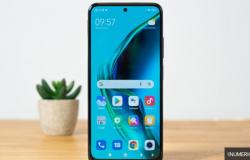At first mocked and disdained, the Phryge was revered, even venerated, throughout the events of the Paris 2024 Olympic and Paralympic Games. Its success is unprecedented, in a country much less familiar with mascots than the United States and the ‘Asia. Founder and creative director of Mascotte+, Steve Knafou, 34, specializes in creating these emblems for various companies. According to him, the popularity of the Phryge is not only explained by its “cuteness”.
What are the qualities of a good mascot?
The most widespread idea is that a mascot must generate sympathy. This is true, but it is not enough. A good mascot must also, and perhaps above all, convey the values of the communicating structure. She needs to support a message. For example, a hedgehog accompanying a sponge clearly shows that it scratches. A rabbit which represents a brand of batteries symbolizes the energy they release.
Read also | Article reserved for our subscribers Epoque BAT 04/10//I, Phryge: the incredible epic of the Olympic mascot
Add to your selections
Next, the mascot should help memorize the brand. I like to quote a study from the University of Pittsburgh [Pennsylvanie, Etats-Unis]which shows that 50% of people who have seen a mascot remember it three months later, while the figure drops to 5% if it is only a logo. Finally, it can become a source of income thanks to derivative products.
Does this necessarily involve a smiling face?
It is not essential. Some work without facial expression, like the BIC man. But, in 90% of cases, companies want a smiling mascot, because this is part of the principle of mimêsis: we feel the emotion it gives off, exactly as the masks of Antiquity already did. The smile conditions positively. However, it is also problematic because, if it is missed, the effect is the opposite: the mascot can frighten the youngest. And, for my part, I prefer to convey other messages, such as speed or modernity. A company must want to tell more than sympathy.
Can a mascot take any shape?
There are four types: an animal (for example, a squirrel), a human (like Mr. Propre), a humanoid (like the Michelin Bibendum) and, finally, objects to which we add arms and legs. This is the case of the Phryge but also of the M&M’s mascots or that of the McDonald’s Happy Meal. This is perhaps why the Phryge was destabilizing when it was released, because it was the first time at the Olympics that we had an object mascot and not a humanoid or an animal. In theory, the object transformed into a mascot is the most regressive. It works well with children because it evokes babies. It is a logic of proportion between the head and the body: when the head measures more than a third of the body, as is the case with an object on which we stick a face in the middle and limbs around it, we takes the proportions of the baby.
You have 46.34% of this article left to read. The rest is reserved for subscribers.







